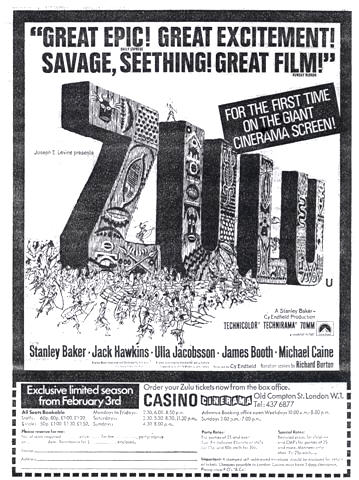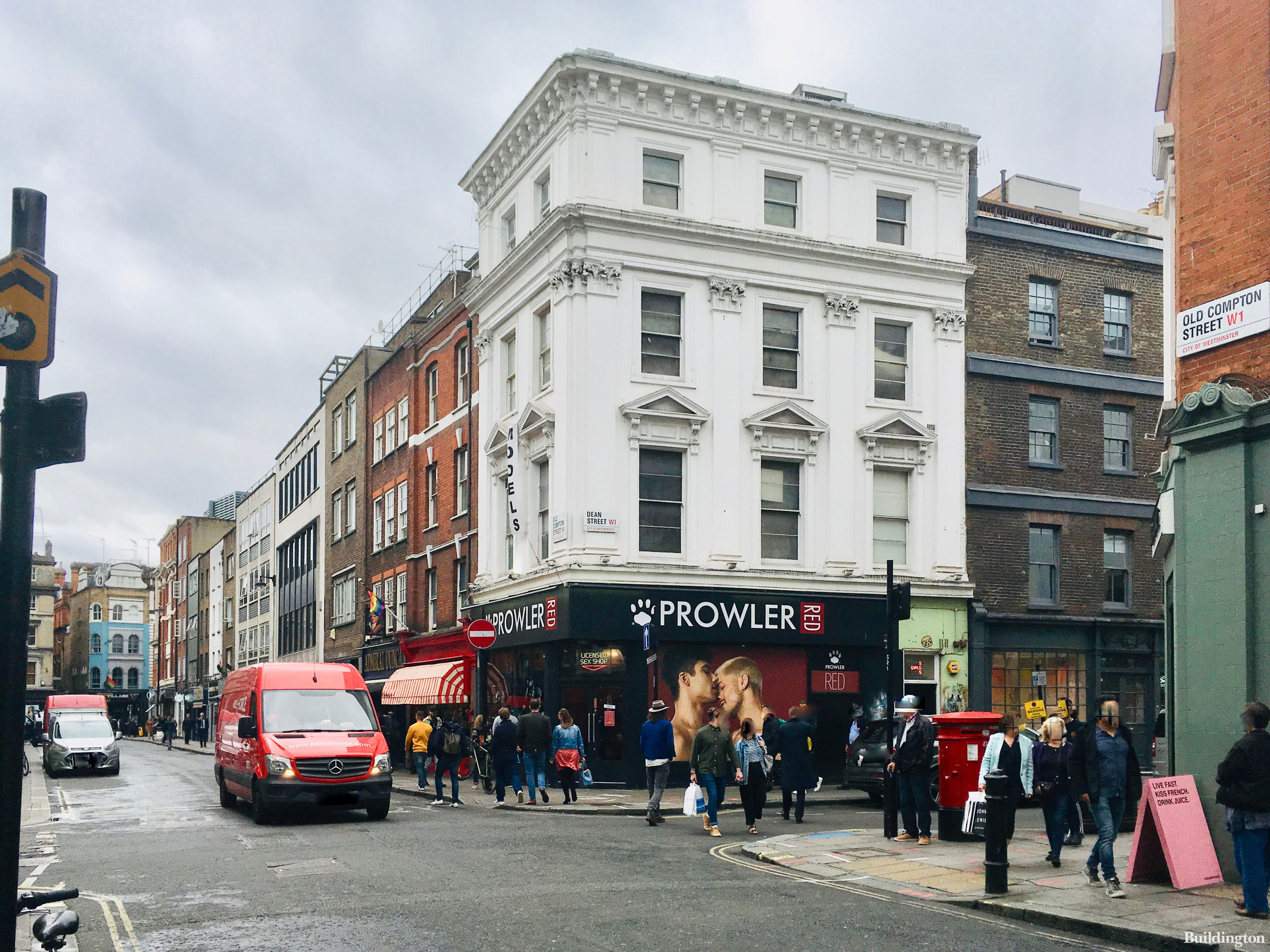London Casino Old Compton Street

- London Casino Old Compton Street London
- London Casino Old Compton Street Map
- London Casino Old Compton Street Sweeping
- London Casino Old Compton Street Blues
Hotels near Old Compton Street, London on Tripadvisor: Find 55,093 traveler reviews, 60,466 candid photos, and prices for 2,426 hotels near Old Compton Street in London, England. Office space to rent on 66 Old Compton Street in London. Get in touch with Workthere to find your perfect space. Locations Latest Blogs and Industry Guides. Runway East, 66 Old Compton Street. London Casino: Cinerama film formats shown: 3-strip and 70mm: 3-strip dates: From 09/30/54 to 03/26/65: 70mm dates: From 04/08/65 to 1974: Screen curvature and size: 146 degree louvered screen: 64ft by 24ft - removed 09/19/74: Address: Old Compton Street.
Hotels near Old Compton Street: (0.02 km) Chic on Frith (Y) (0.04 km) Valet Apartments Old Compton Street (0.06 km) Romilly Street, Splendid home by LOVELYDAYS (0.06 km) Kettner's Townhouse (0.06 km) studio heaven; View all hotels near Old Compton Street on Tripadvisor. Located in London’s West End in the centre of the Soho district. Opened on April 3, 1930 as the Prince Edward Theatre with the musical comedy “Rio Rita”. Seating was provided for 1,800 in orchestra stalls.
The London Casino
The Prince Edward Theatre on Old Compton Street, named after Edward Prince of Wales, opened on the 3rd April 1930 on the site of a drapers business called The Emporium. The area was soon to be known as London’s Quarter Latin now simply Soho and the venue later became The London Casino. The exterior was in the style of an Italian Palace, and the foyer pure art deco. The auditorium was on two levels (stalls and dress circle) and seated 1,650. From its inception the shows staged (Rio Rita, Nippy, Fanfare) did not do well and even an appearance of the famous Parisian music hall star Josephine Baker failed to click. After the pantomime Aladdin the theatre was forced to close in January 1935.

The business consortium that run the French Casino in New York saw an opportunity to open a London branch and bought the venue for £25,000 and immediately began renovations to turn the venue into a magnificent state of the art Restaurant-cabaret. The stage was converted into a semi circular revolving floor that could be moved forward and also used for dancing and the understage converted to kitchens. The auditorium was changed considerably: part of the stalls was removed to make way for the dance floor and diners could sit at tables placed in the pit space or arranged in tiers along the whole width of the dress circle from which there was a staircase on either side to the dance floor.
The building re-opened on the 2nd of April 1936 as The London Casino with the extravagant revue Folie Parisiennes staged by Clifford Fischer that had already scored a big success in New York and Miami the previous year. The theatre was opened from 6.30pm -2am and the revue was given twice nightly. Entry was 15s 6d weekdays and 17s 6d on a Saturday. Dinner sessions were from 7.15-10.45pm with the show at 8.15pm and supper sessions were from 11pm-2am with the show at 12. On Saturday night there was just one session from 7.30pm – 12.30am with the show at 8.15pm and 11.10am.
The Stage said that ‘there is nothing else quite like it in London’ and it was no surprise that the London Casino quickly became the place to go for an evening’s entertainment and for the first time it made money, taking on average £6-7,000 per week. Theatre World declared that it had ‘become the most popular rendezvous in the entertainment world’ where one could watch the show, socialise with friends, have dinner or supper, drink and dance. A few years later Theatre World added that it was ‘one of the smartest and most popular resorts of London’s night life’ with perfect cuisine, immaculate service and two first-rate orchestras to complete the evening.
Under Clifford Fischer’s consortium seven extravagant shows were produced at the French Casino. Folies Parisienne was followed by Folies de Femmes (September 1936), Folies d’Amour (January 1937), Nuits de Folies (September 1937) a renamed version of The French Casino Folies from New York, Folies Superbes (December 1937) a renamed version of The New Folies Bergere show from New York and then in April 1938 two shows were put on: Plaisirs de Paris (at dinner) and Montmartre a Minuit or Midnight (at supper).
In late 1938, perhaps following the demise of the French Casino in New York in November 1937, the London Casino closed. But all was not lost, Alfred Esdaile who directed the shows at the Prince of Wales Theatre took the lease over and staged La Revue du Bal Tabarin in February 1939, followed by two shows – Revue d’Elegance (at dinner) and Folies de Minuit (at supper) in August 1939.
However even Esdaile could not continue and by 1940 the London Casino had closed presumably due to the war and the fact that the blitz on London did not encourage the theatre going public to go out as before. However, in 1942 it became a forces theatre. After the war it was converted back into a theatre where variety shows were staged and it is still in use today.
London Casino Old Compton Street London
All images and text © copyright Gary Chapman / Jazz Age Club and must not be re-used without prior consent
Sources:
New York Times, Variety, Dancing Times, The Age, The Stage, Chicago Tribune and Theatre World.
London, W1D 4HS
9 people favorited this theater
Related Websites
Delfont Mackintosh Theatres(Official)
Additional Info
Operated by:Delfont Mackintosh Theatres
Architects:Edward Albert Stone
Functions:Live Theatre
Styles:Art Deco, Italian Renaissance
Previous Names: London Casino, Casino Theatre, Casino-Cinerama Theatre, Casino Cinema
Phone Numbers: Box Office: 440844.482.5151

Nearby Theaters
News About This Theater
- Jun 23, 2012 — REMEMBERING CINERAMA (Part 54: Omaha)
Located in London’s West End in the centre of the Soho district. Opened on April 3, 1930 as the Prince Edward Theatre with the musical comedy “Rio Rita”. Seating was provided for 1,800 in orchestra stalls, dress circle and balcony levels and stage boxes. Designed by noted cinema architect Edward A. Stone, with the exterior in red and yellow brick in the style of an Italian palace. The Art Deco style interior decorations were by Marc-Henri Levy and Gaston Laverdet. Although built as a live theatre, it was equipped for film presentations from the start, and screened its first film “Song O' My Heart” starring John McCormack in May 1930. During the early-1930’s it was often used during the day for film trade shows.
The Prince Edward Theatre was closed in 1935, when new owners took over and converted it into cabaret/restaurant known as the London Casino. The owners also operated the French Casino in New York and the Casino in Miami, Florida. Conversion entailed the construction of stairways from the orchestra stalls to the dress circle, and a semi-circular dance floor on the stage. The London Casino opened on 2nd April 1936 with “Folies Parisiennes”, and the shows were interchanged with New York and Miami. The French Casino in New York went bankrupt, but the London Casino was quite successful, and continued until 1940, when the German blitz on London caused it to close.
In July 1942, it was converted into the Queensbury All Services Club, used to entertain the troops. This continued until the end of World War II in 1945. The London Casino re-opened was re-converted back to a live theatre re-named Casino Theatre, opening on 14th October 1946 with “Pick-Up-Girl”, and was now under the control of Tom Arnold and Emile Littler. A revival of “The Dancing Years” was staged in March 1947, and this was followed by seasons of variety with international stars topping the bill, ballet seasons and annual pantomimes also features in the programming. In 1949 Robert Nesbitt’s “Latin Quarter” revue was staged and this ran for several years. In 1953 Cicely Courtneidge starred in the Vivian Ellis revue “Over the Moon”, which was followed by the holiday-camp musical “Wish You Were Here”.
In 1954, the London Casino was altered by architects Frank Baessler and TPH & E Braddock to house London’s first Cinerama cinema with a massive 64-foot-wide curved screen and three projection boxes built in the orchestra stalls. “This Is Cinerama” opened on 1st October 1954 at the Casino-Cinerama Theatre. This was followed by other films made in the Cinerama process “Cinerama Holiday”, “Seven Wonders of the World”, “Search for Paradise”, “South Seas Adventure, 'The Best of Cinerama”, “How the West was Won” and “The Wonderful World of the Brothers Grim”. On 17th December 1965 a simultaneous European Premiere of “Battle of the Bulge” was held here and at the Theatre Royal Cinerama in Manchester. The Royal World Premiere of “Khartoum” was held on 9th June 1966. A World Premiere of “Custer of the West” was held on November 9th 1967. On 3rd February 1972 the re-release of “Zulu” starring Stanley Baker was presented in 70mm. On 18th October 1973 “This Is Cinerama” returned to theatre - “to be experienced by a new generation”. The Cinerama screen was eventually removed in 1974, with a more conventional screen replacing it until 8th April 1978 when it closed as the Casino Cinema with a double-bill of Diana Ross films “Lady Sings the Blues” and “Mahogany”.

London Casino Old Compton Street Map

On return to live shows in June 1978, it reverted back to its original name, Prince Edward Theatre, opening with the world premiere production of “Evita”. The musical ran for over eight successful years.
A further major alteration and renovations by the architectural firm RHWL in 1993, has modernized the auditorium and made it more attractive than at any time in its history.
It is now a major theatre in London’s West End and has played long runs of “Chess”, “Anything Goes”, “Crazy for You”, “Show Boat”, “West Side Story”, “Martin Guerre”, “Miss Saigon”. “Mama Mia”, “Aladdin”, “Mary Poppins” and “Jersey Boys”.
London Casino Old Compton Street Sweeping
Just login to your account and subscribe to this theater